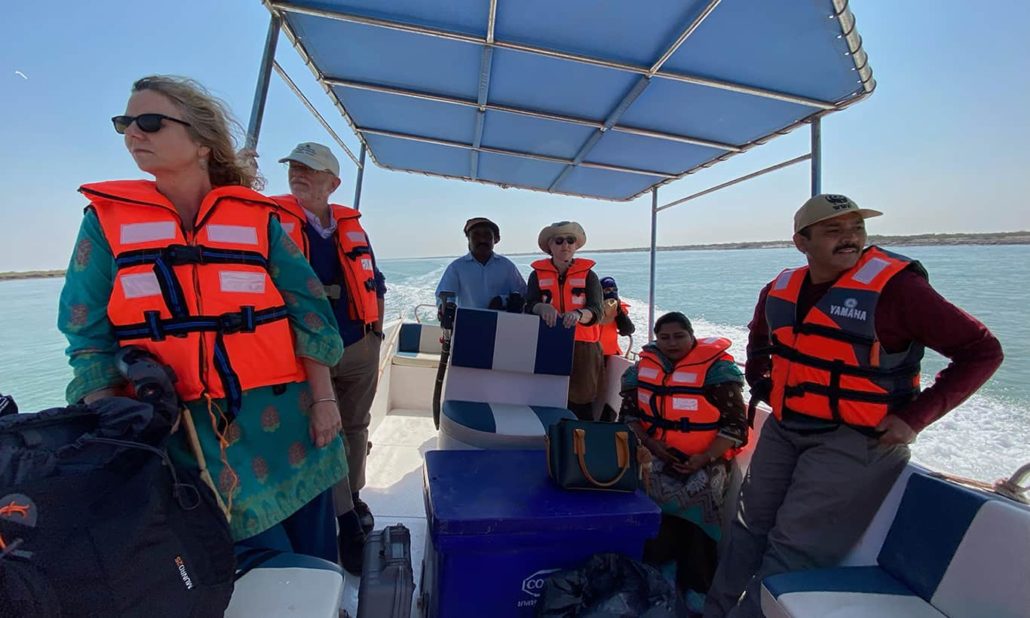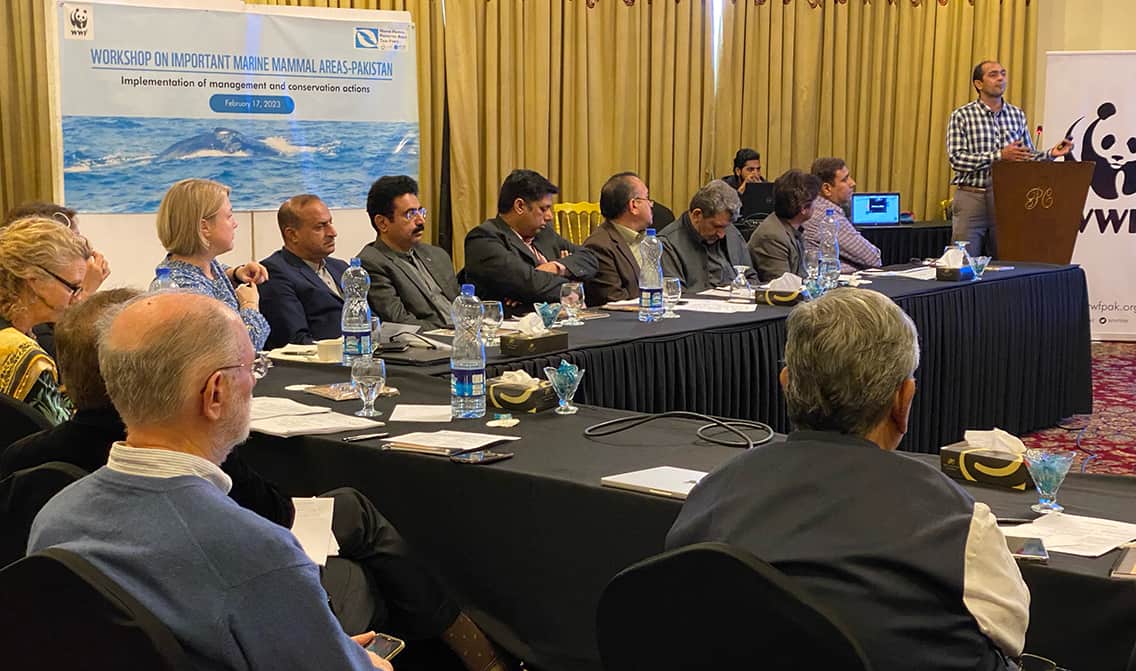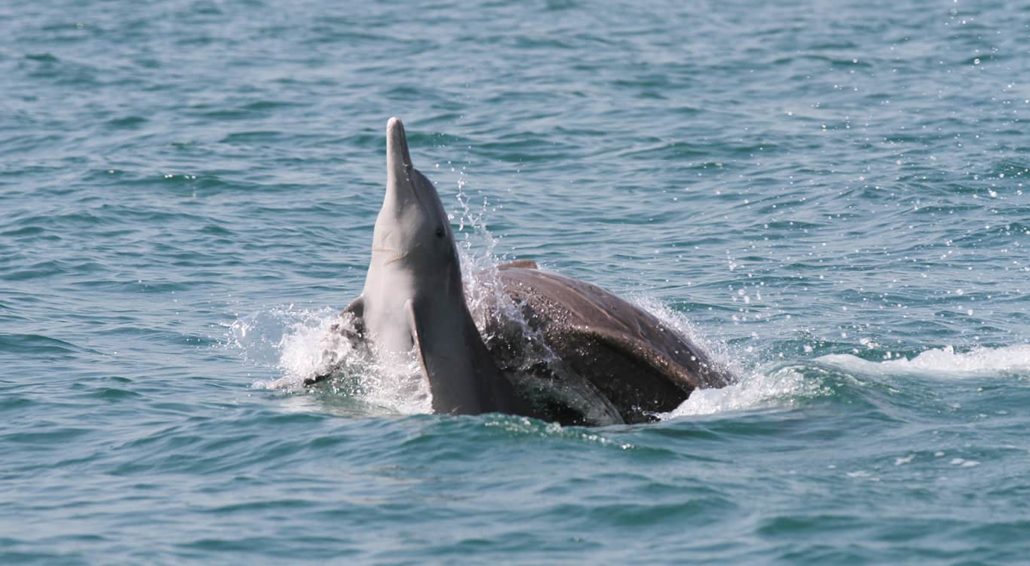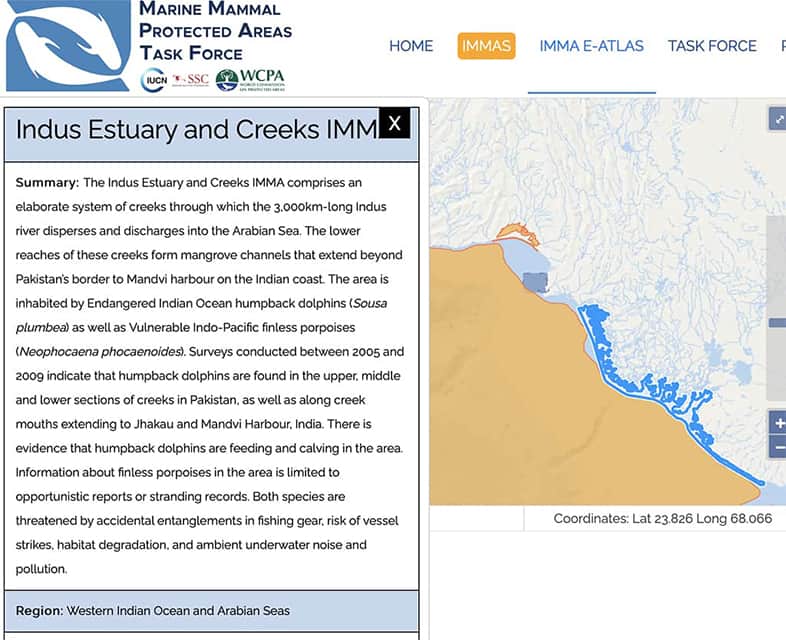IMMA Secretariat Travels to Karachi to Help Implement Important Marine Mammal Areas in the coastal waters of the Arabian Sea
by Erich Hoyt, co-chair IUCN Marine Mammal Protected Areas Task Force
by Erich Hoyt, co-chair IUCN Marine Mammal Protected Areas Task Force

“Look! More humpback dolphins!”
In flat calm waters at the mouth of the Indus Estuary we were watching Indian Ocean humpback dolphins, Sousa plumbea, lift their pale grey platform dorsal fins high in the air before diving for small fish and shrimps. After a few splashes they were gone—off to find more food. It was the third group we’d seen in the past hour.
Our journey through the estuary revealed largely denuded mangrove forest but we could see signs of the massive efforts being made to replant what had been lost.
We had joined conservationist colleagues from WWF Pakistan to try to find these endangered dolphins living in the Indus Estuary and Creeks Important Marine Mammal Area (IMMA). As IUCN Task Force co-chairs Giuseppe Notarbartolo di Sciara and I, along with deputy chair Gill Braulik, we had participated in a seminal Western Indian Ocean IMMA workshop in 2019 in Oman and had succeeded with Pakistani scientists, in getting these and other areas on the map as habitats important for the survival of these dolphins.

Now, in February 2023, we three were being welcomed by Pakistani scientists and conservationists as part of our visit featuring a one-day conference in Karachi and two days of meetings.
At the conference, we presented several talks to make the case for marine protected areas in the three Arabian Sea IMMAs along the coast of Pakistan. We also heard from experienced scientists working with WWF Pakistan and independently, fishing advisors and the industry, and local, state and national environment and fisheries department government officials, some of them interviewed in their offices in Karachi.
The outcome of the conference and discussions with Pakistani scientists, NGOs, government officials and other stakeholders was that Pakistan is ready to take forward their IMMAs.
“IMMAs will be a valuable tool for making marine protected areas in Pakistan,” said Mr. Ghulam Qadir Shah, Inspector General Forests in the Ministry of Climate Change. “We feel our responsibility as members of the Convention on Biological Diversity (CBD) which in its COP15 in December in Montreal agreed that 30% of the ocean should be protected by 2030 in effective marine protected areas.”
“The IMMA process gives us the chance to develop science-based proposals for MPAs,” said Moazzam Kahn, scientific advisor to WWF Pakistan and long-time national fisheries advisor.

After a few hours on the water with the dolphins, we visited a community living at the edge of the estuary. The women, dressed in colourful traditional saris talked about how they went to sea to fish with their husbands. They always loved seeing the dolphins and no one would think of harming them. One older woman remembered seeing the blind Indus River dolphins when the estuary had fresh water in the years before the dams were constructed. That was many decades ago.
“These dolphins now live far upstream,” explained Gill Braulik, a world authority on river dolphins. “The Indian Ocean humpback dolphins have taken their place in what is now a salt water estuary, and the local community reports that, since the replanting of the mangroves began, these dolphins are increasing.”
Our Task Force, with WWF Pakistan, the scientists and the local community on the Estuary, are all hoping that the IMMAs of Pakistan can be used as scientific information layers to contribute to the creation of effective marine protected areas.

 Instituto Baleia Jubarte
Instituto Baleia Jubarte Students heed the call for Important Marine Mammal Areas in the North East ...
Students heed the call for Important Marine Mammal Areas in the North East ...